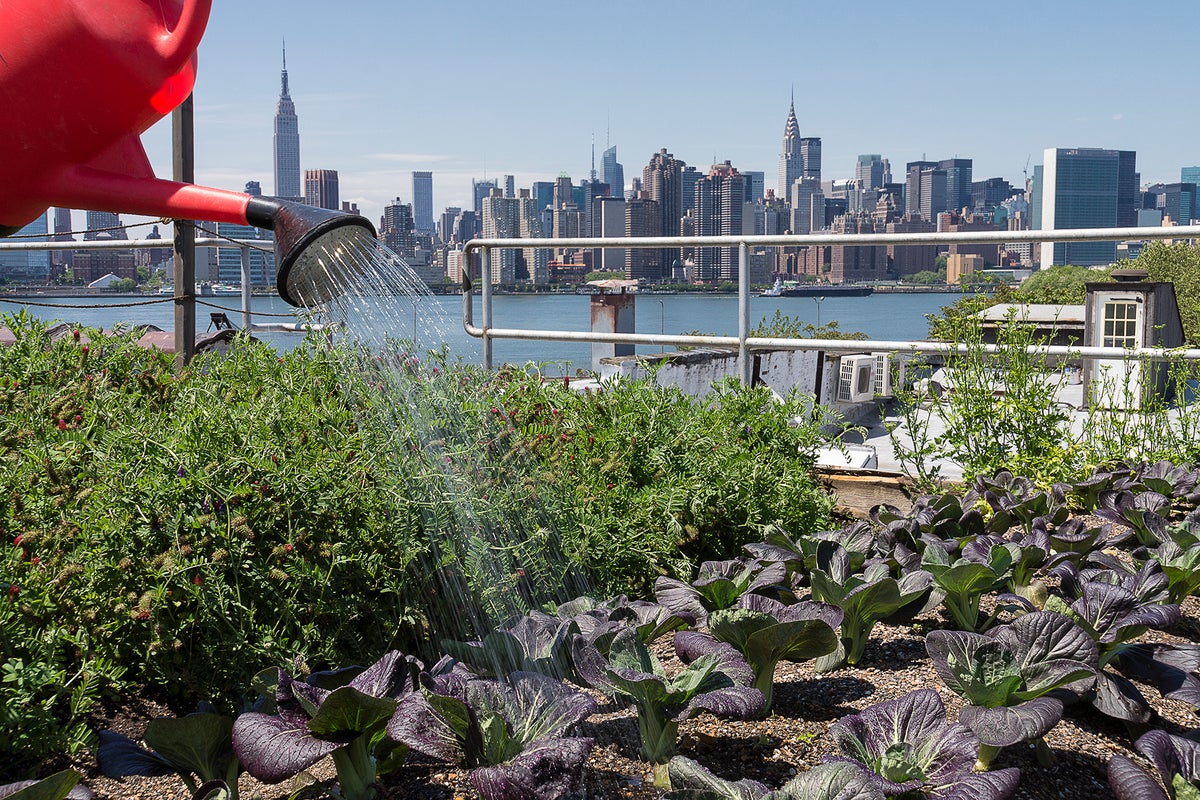City Blooming - Truths
City Blooming - Truths
Blog Article
City Blooming Fundamentals Explained
Table of ContentsLittle Known Questions About City Blooming.The Greatest Guide To City BloomingSome Known Facts About City Blooming.Everything about City BloomingThe Greatest Guide To City Blooming

As you stroll the roads of the Bronx, Southside Chicago or East Oakland, you might see have actually also seen huge stories of ripening fruits and veggies being collected. What specifically are city ranches and neighborhood gardens? Are they different? If so, how? And much more importantly, just how can you sustain them? Urban farming, metropolitan farming, or urban horticulture is the method of cultivating, handling and distributing food in or around urban locations.
Normally, metropolitan farming as a method is a larger investment than horticulture. There are plenty of extra hours invested into the trivial matters of farming, from the plant plan to the having a tendency of your beds. This time dedication tackles a whole brand-new significance once you realize the objective that is being worked in the direction of and devoted, particularly that of getting an abundant yield of plants to be consumed.
An area garden is a solitary tract gardened jointly by a group of individuals. Community yards make use of either specific or shared stories on exclusive or public land while producing fruit, veggies, and/or plants grown for their appealing look. The standard design here is that a huge group of individuals each contribute a reasonably percentage of time to functioning their own story, and receive the fruits of their labor as an outcome.
The Basic Principles Of City Blooming

, and community companies by aiding them create and expand their very own gardens. The distinctions between community yard and urban farm are nuanced, though in the end the very same fundamental task takes placefood plant farming but within different organizational frameworks - garden care.
Urban farms are usually much more organization and technology oriented, with the main function of taking full advantage of returns and marketing fruit and vegetables. Industrial metropolitan farms are frequently targeted at increasing manufacturing on generally small acreage with advancements in technologies such as aquaculture, hydroponics, and greenhouses and may partner with an industrial kitchen area to produce locally-produced value-added products such as jams and sauces.
How City Blooming can Save You Time, Stress, and Money.
The fruit and vegetables is generally grown on a much smaller sized scale and is taken home to eat at home or to share. By providing much required green spaces in penniless, concrete city areas, they permit the advantages of backyard horticulture to those doing not have backyards, and function as exceptional examples of self-organization and community advocacy.
Some community gardens, usually in metropolitan locations, relocate into expanding for industrial usage while some metropolitan ranches open up their land for even more socially conscious advantages. No matter of just how you define and separate the 2, they are both positive pressures for excellent in cities around America and the globe.
As all of Small Axe Peppers' hot sauces are sourced with peppers from neighborhood yards, your purchases directly help money these neighborhood projects (https://cityblooming.jimdosite.com/). Take part in the change by.
A friend of mine recently commented in a discussion concerning horticulture that "It's intriguing, I've always believed that farming as a method is rather like horticulture. As I spent even more and even more time in my Urban Farming course I've come to recognize that to say that horticulture is a miniature extension of agriculture would be a pop over to this web-site little bit of stretch.
An Unbiased View of City Blooming
They both focus on the treatment of plants for some objective that can be food, profit or simply the satisfaction of the craft. They both require a financial financial investment on top of a time investment, something that a lot of individuals in our quick paced life do not have a great deal of.
We can see that the similarities are abundant, but are the distinctions enough to create a difference? As a pupil at NYU I have the possibility to function with the leave It Much better Foundation, a group that instructs standard nourishment and horticulture to high institution students. http://peterjackson.mee.nu/where_i_work#c2252. This experience gave me a thorough foray into the globe of amateur horticulture beyond what a lot of people have touched with
With these in hand, I can securely claim that these two tasks are quite honestly various monsters. Farming as a practice is a bigger financial investment than horticulture. There are many a lot more hours invested into the minutiae of farming, from the crop plan to the tending of your beds. This time commitment takes on an entire brand-new meaning once you realize the objective that is being worked towards and dedicated, namely that of gaining a plentiful return of crops to be eaten.
The average garden enthusiast goes about his responsibilities as a chore as opposed to a requirement and because of this identifies his or herself from the farmer. With this difference in hand, they are both soothing and enjoyable exercises that anybody can pick up, which by itself ought to be an ad for both.
The Ultimate Guide To City Blooming
Something went wrong - eco-friendly practices. Wait a minute and try again Try again
Report this page